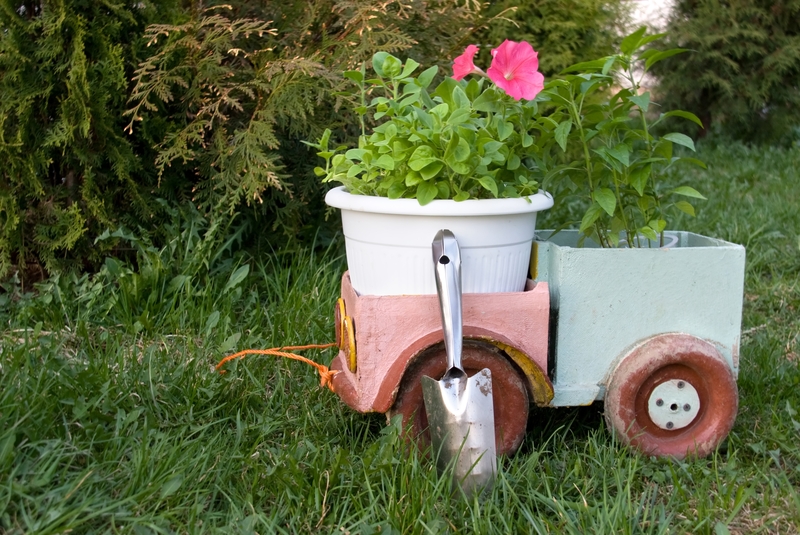Your Checklist for Proper PPE Waste Disposal
PPE waste disposal has become an essential concern for businesses, healthcare institutions, and individuals alike. In light of the rising use of personal protective equipment due to health pandemics and occupational safety requirements, knowing how to dispose of PPE waste properly is critical. Incorrect disposal methods contaminate the environment, risk human health, and can even violate local and international regulations. This comprehensive guide provides a checklist for proper PPE waste disposal to help you stay compliant, protect the environment, and ensure public safety.
Table of Contents
- Why Proper PPE Waste Disposal Matters
- Types of PPE Waste
- Regulations Governing PPE Waste Disposal
- PPE Waste Disposal Checklist
- Eco-Friendly Approaches to PPE Waste
- Common PPE Disposal Mistakes to Avoid
- Conclusion
- Frequently Asked Questions
Why Proper PPE Waste Disposal Matters
With billions of face masks, gloves, and other PPE items being used and discarded each month globally, improper disposal of PPE waste can result in:
- Environmental contamination--PPE waste can take decades to decompose, leaching harmful chemicals and microplastics into soil and water.
- Spread of disease--Used PPE may carry infectious agents, posing risks to sanitation workers and the general public.
- Clogged waste management systems--Improper disposal in toilets or unapproved bins can block drains and damage municipal systems.
- Legal consequences such as fines and penalties for violating hazardous waste regulations.
Addressing PPE waste management is essential for public health and environmental stewardship. Let's explore exactly what constitutes PPE waste and why managing it properly is so important.
Types of PPE Waste
Understanding the types of PPE waste is crucial for proper disposal. PPE, or personal protective equipment waste, generally includes:
Masks and Respirators
- Surgical masks (single-use and multi-layer)
- N95, KN95, FFP2/FFP3 masks
- Reusable cloth masks
Gloves
- Latex gloves
- Nitrile gloves
- Vinyl gloves
Face Shields and Goggles
- Plastic face shields (often disposable)
- Safety goggles (damaged or non-reusable)
Protective Clothing
- Hazmat suits
- Isolation gowns
- Lab coats and shoe covers
Packaging and Wrapping
- Plastic packaging from medical PPE
- Biohazard bags and containers used for collection and transport
It is important to identify and segregate these different types of PPE waste to ensure they undergo the suitable disposal processes.
Regulations Governing PPE Waste Disposal
Both national and global bodies regulate the safe disposal of PPE waste due to its hazardous nature. Some vital guidelines include:
- OSHA (Occupational Safety and Health Administration): Sets standards for PPE use and disposal in the United States.
- EPA (Environmental Protection Agency): Regulates infectious waste treatment and landfill operations.
- WHO (World Health Organization): Issues guidance for health facilities worldwide regarding hazardous medical waste management.
- Local/municipal regulations: Many cities and states have their own rules for PPE waste collection and disposal.
Failure to comply with regulations can result in substantial fines, legal liability, and environmental damage. Organizations and individuals must familiarize themselves with relevant waste directives in their region, and train staff on legal waste disposal procedures.
Your Comprehensive PPE Waste Disposal Checklist
Effective PPE waste disposal procedures require a systematic approach. Use the checklist below to ensure your practices meet safety and compliance standards:
1. Assess and Classify PPE Waste
- Identify the type of PPE waste--Determine if the item is contaminated or has been in contact with infectious agents.
- Segregate infectious PPE waste from non-infectious waste, including recyclable materials.
- Check if any PPE should be washed and reused, like certain cloth masks or durable gowns.
2. Use Proper Collection Bags and Bins
- Utilize color-coded waste bins (e.g., red or yellow for infectious waste, black for general waste, blue/green for recyclables).
- Ensure bins are labeled clearly--PPE Waste Only.
- Place PPE collection points at entry/exit, workstations, and other critical locations.
3. Safely Remove and Handle Used PPE
- Remove PPE carefully to avoid self-contamination. Avoid touching the exterior of masks and gloves.
- Wash hands thoroughly before and after handling used PPE.
- Do not shake used PPE or attempt to clean disposable items.
4. Package for Transport
- Seal PPE waste bags securely to prevent spills and leaks.
- Double-bag if there is a high risk of contamination.
- Do not overfill collection bags; replace as needed.
5. Interim Storage
- Store sealed PPE waste in a secure, well-ventilated area away from food and clean supplies.
- Limit access to authorized personnel only.
- Maintain regular collection schedules and avoid accumulation.
6. Transportation and Handover
- Engage licensed hazardous waste management contractors for PPE waste removal.
- Maintain detailed logs and manifests for transported PPE waste.
- Use vehicles and containers designed for biohazard waste to minimize environmental exposure.
7. Final Disposal or Treatment
- Decontaminate PPE waste via incineration, autoclaving, or other government-approved methods.
- Do not landfill untreated infectious PPE; follow your jurisdiction's protocol for infectious waste disposal.
- Where possible, recycle non-contaminated PPE waste after appropriate disinfection.
8. Record Keeping and Reporting
- Document every stage of the PPE disposal process for legal compliance.
- Report incidents, spills, or process failures to relevant health and environmental authorities.
9. Staff Training and Education
- Provide regular training on correct PPE waste management to all employees.
- Post clear instructional signage at all PPE disposal locations.
Tip: Regularly review and update your checklist to account for changes in regulations or new PPE types introduced at your workplace.
Eco-Friendly Approaches to PPE Waste
With global concerns about plastic pollution and climate change, eco-friendly PPE waste disposal is becoming a priority. Consider integrating these green practices:
- Source separable, recyclable PPE--Some manufacturers now offer recyclable face masks and biodegradable gloves.
- Partner with certified recycling companies for non-infectious PPE items.
- Initiate reusable PPE programs when safe and practical, such as washable gowns or face shields.
- Educate staff on best practices for minimizing PPE waste generation.
- Support research and industry innovations for sustainable PPE alternatives.
Important: Never recycle contaminated PPE through regular household recycling systems. Always check with local authorities for approved methods.
Common PPE Disposal Mistakes to Avoid
Avoid these frequent missteps to ensure effective PPE waste management:
- Flushing PPE down toilets--This causes clogs and pollutes water systems.
- Placing contaminated PPE in general trash--Increases exposure risk for sanitation workers and the public.
- Overfilling waste bins--Creates spill hazards and complicates collection.
- Ignoring local disposal guidelines--Could result in fines and legal action.
- Reusing single-use PPE--Compromises infection control.
- Failing to train staff on PPE disposal--Leads to non-compliance and unsafe practices.
Conclusion
Proper PPE waste disposal protects people, communities, and the environment from potentially devastating consequences. Following a rigorous checklist ensures compliance with laws, reduces environmental footprints, and maintains workplace health and safety. By integrating responsible disposal practices--such as segregation, secure storage, lawful handover, and proper treatment of PPE waste--every organization and individual can play a crucial role in controlling infection risks and safeguarding our planet.
Frequently Asked Questions (FAQs): PPE Waste Disposal
What is considered PPE waste?
PPE waste includes any disposable item designed to protect against infectious agents, chemicals, or physical hazards, such as masks, gloves, face shields, gowns, shoe covers, and packaging used in healthcare and other sectors.
Can PPE waste go in regular recycling bins?
No. Most PPE waste is not recyclable through standard recycling streams due to contamination risks. Specialized recycling programs may accept non-infectious PPE; always check local guidance.
How should households dispose of used masks and gloves?
Seal used masks and gloves in a plastic bag before discarding with general waste. Do not place them in household recycling or compost bins. Wash hands immediately after handling used PPE.
Are there penalties for improper PPE waste disposal?
Yes--failure to dispose of PPE waste correctly can result in fines and penalties from local health and environmental agencies, especially for businesses and healthcare institutions.
Can PPE be reused?
Some PPE, like cloth masks or durable goggles, can be cleaned and reused if not contaminated. However, single-use items like surgical masks and disposable gloves should never be reused.
What is the environmental impact of improper PPE disposal?
PPE waste can pollute oceans, threaten wildlife, introduce microplastics into food chains, and contribute to landfill overload if not managed responsibly.
Related Keywords:
- PPE waste management
- Safe disposal of PPE waste
- PPE disposal checklist
- PPE waste disposal methods
- Eco-friendly PPE disposal
Stay safe, protect the planet, and follow this checklist for proper PPE waste disposal in every setting.


